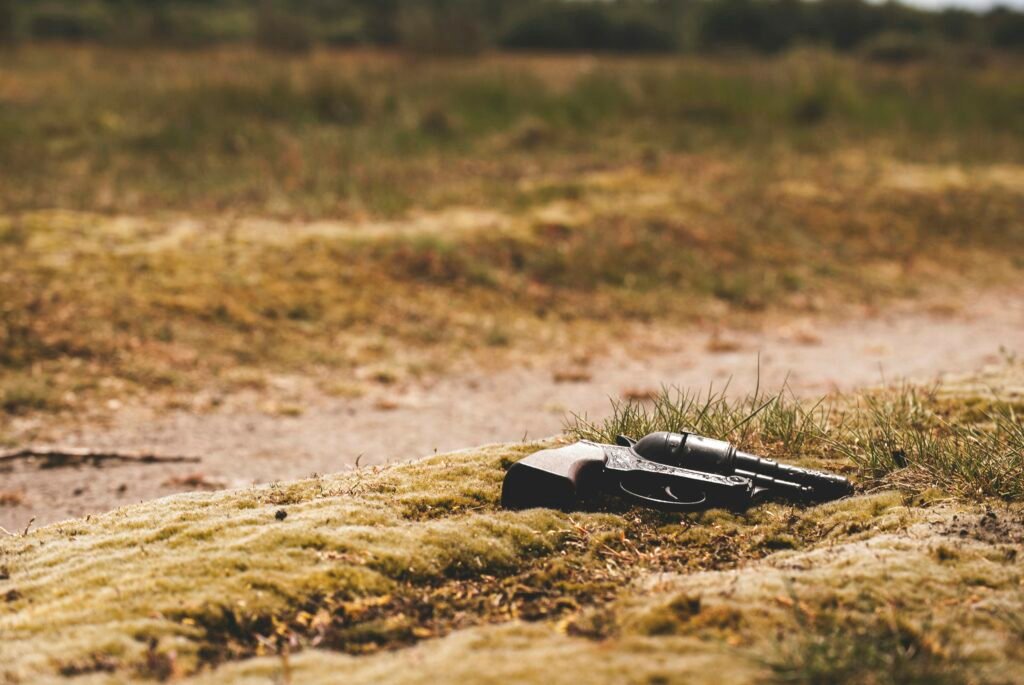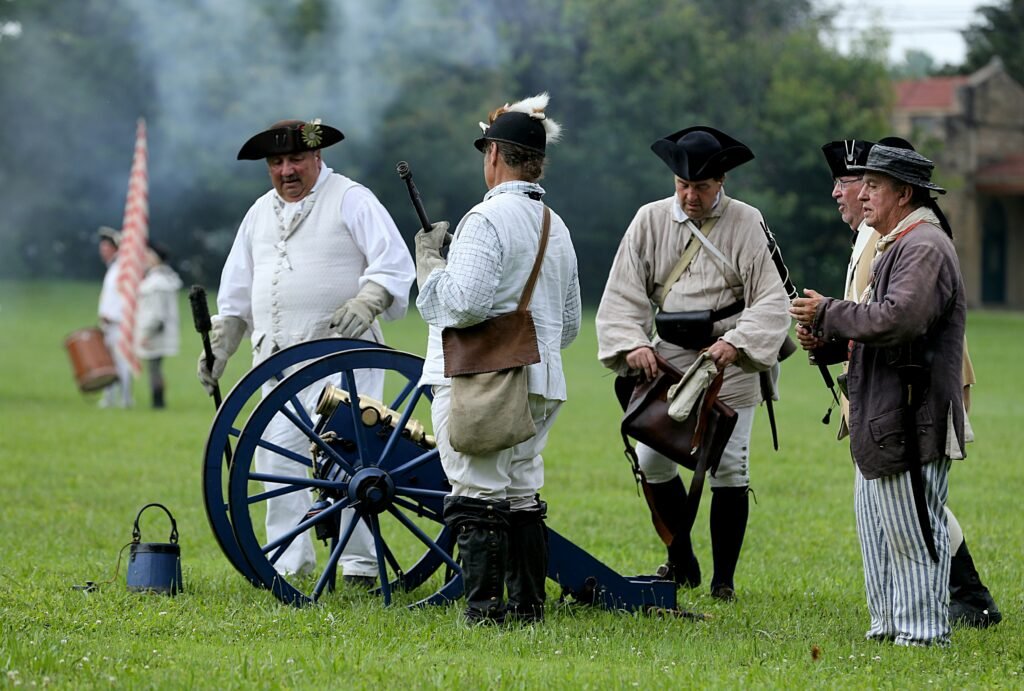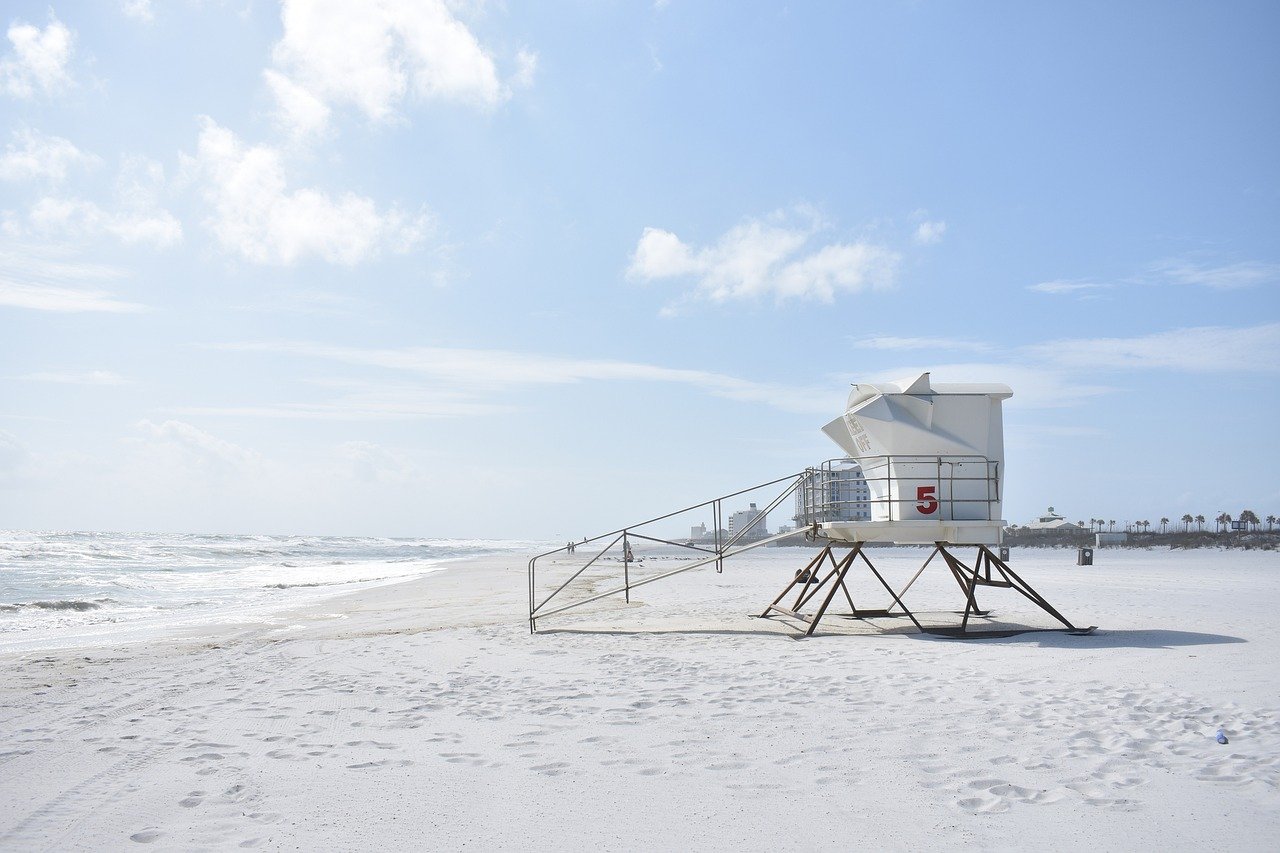You’re ready to take the necessary step to ensure the safety of your firearms by installing a gun safe. But where do you begin? In this article, we will explore the essential tools you need to safely and securely install a gun safe in your home. With our handy guide, you’ll have all the right equipment at your disposal to confidently tackle this important project. From stud finders to levelers, we’ve got you covered. So grab your tools and let’s get started on creating a secure space for your firearms that gives you peace of mind.
Preparing the Area for Installation
Clearing the space
Before starting the installation process, it’s important to clear the designated area where you plan to install your gun safe. Remove any furniture, decor, or obstacles that may hinder the safe’s placement or accessibility. This will ensure that you have enough space to work and that the safe is easily accessible in case of an emergency.
Checking for structural support
Once the space is cleared, it’s crucial to assess the structural support of the chosen area. Gun safes can be heavy, especially when fully loaded, so it’s essential to ensure that the floor and walls can withstand the weight. Check for any signs of damage or weakness, such as cracks, sagging floors, or deteriorated walls. If you have any concerns about the structural integrity, consult a professional before proceeding with the installation.
Measuring the area
Accurate measurements are key when it comes to installing a gun safe. Measure the height, width, and depth of the space where the safe will be placed. Ensure that there is enough clearance for the safe’s door to open fully without obstruction. Take into account any additional space needed for ventilation around the safe. These measurements will help you choose the right size safe and plan for any adjustments that may be necessary.
Gathering necessary tools
To properly install your gun safe, you’ll need a set of tools. Some essential tools for this project include a stud finder, a carpenter’s level, a power drill, drill bits, appropriate anchors or anchor bolts, shims, and a socket set. Having these tools readily available will make the installation process smoother and more efficient. Make sure to gather all the necessary tools before you begin the installation.
Ensuring Safe Transportation
Choosing appropriate transportation method
Once your gun safe is fully assembled and ready for installation, you’ll need to transport it to the designated area. Depending on the size and weight of your safe, different transportation methods may be more suitable. If you have a smaller safe, you may be able to transport it manually with the help of a dolly or hand truck. However, larger and heavier safes may require professional movers who specialize in gun safe transportation. Consider the weight and dimensions of your safe when selecting the transportation method to ensure the safety of both the safe and yourself.
Using proper lifting techniques
When lifting and moving a gun safe, it’s important to prioritize safety to avoid personal injury or damage to the safe. Use proper lifting techniques, such as bending at the knees, keeping your back straight, and using your legs to carry the weight. Enlist the help of others if necessary to distribute the load and make lifting more manageable. Always communicate and coordinate movements to ensure everyone is working together smoothly.
Securing the gun safe in the vehicle
If you are transporting the gun safe yourself, it’s crucial to secure it properly in the vehicle to prevent any movement that could cause damage during transportation. Utilize straps or bungee cords to secure the safe to the vehicle’s frame or other sturdy points. Place blankets or foam padding between the safe and the vehicle to minimize any potential scratches or dents. Additionally, ensure that the safe is adequately balanced within the vehicle to avoid shifting while in transit.
Anchoring the Gun Safe

This image is property of images.unsplash.com.
Identifying the type of flooring
Before you anchor your gun safe, it’s important to determine the type of flooring you have. Different flooring materials may require different anchor methods to securely attach the safe. If you have a concrete or solid stone floor, you may need to use concrete anchor bolts. For wooden or laminate floors, you may require specific floor anchor kits. Understanding your flooring type will help you choose the appropriate anchoring method and ensure the safe is properly secured.
Selecting the appropriate anchor kit
Once you have identified the type of flooring, you can select the appropriate anchor kit for your gun safe installation. Anchor kits typically include the necessary hardware and instructions for installation. Ensure that the anchor kit you choose is compatible with the size and weight of your gun safe. It’s crucial to select a high-quality anchor kit that provides sufficient strength and durability to prevent your gun safe from being easily dislodged or tampered with.
Positioning the anchor points
To effectively anchor your gun safe, carefully position the anchor points based on the manufacturer’s recommendations. These anchor points are typically located on the bottom or back of the safe. Position them in a way that maximizes stability and prevents the safe from tipping or shifting. Mark the anchor points on the floor or wall using a pencil or marker, ensuring accuracy and alignment with the safe’s pre-drilled holes.
Installing the anchors
With the anchor points identified and marked, it’s time to install the anchors. Follow the instructions provided with the anchor kit and use the appropriate tools to ensure proper installation. This may involve drilling holes into the floor or wall to accommodate the anchors. Be sure to double-check the alignment of the anchors with the pre-drilled holes in the safe before securing them. Once the anchors are installed, test their strength by applying pressure to ensure a secure attachment.
Leveling the Gun Safe
Using a carpenter’s level
To ensure the stability of your gun safe, it’s important to level it properly. Use a carpenter’s level to check if the safe is aligned horizontally and vertically. Place the level on top of the safe and adjust its position until the bubble is centered between the level’s lines. This indicates that the safe is level in all directions, ensuring that it remains stationary and reduces the risk of the door swinging open unintentionally.
Adjusting the height with shims
In some cases, the floor may not be perfectly level, which can affect the stability of the gun safe. To compensate for uneven flooring, you can use shims. Shims are small wedges that can be placed under the safe’s corners to level it. Insert the shims underneath the safe’s base until it no longer wobbles or tilts. Use a carpenter’s level to check the levelness after each adjustment until the safe is completely stable.
Ensuring stability of the safe
Once the gun safe is leveled and stabilized, test its stability by carefully applying gentle pressure from different angles. The safe should remain steady and not shift or rock. If there is any movement, readjust the shims or anchor points as needed. Ensuring the stability of the safe is paramount for both the proper functioning of its locking mechanism and the overall safety of storing firearms and other valuable items.
Securing the Gun Safe to the Wall

This image is property of images.unsplash.com.
Finding the wall studs
Securing your gun safe to the wall adds an extra layer of protection. Before doing so, you need to locate the wall studs. A stud finder will help you identify the framing behind the drywall. Once you locate the stud positions, mark them with a pencil or masking tape. It’s important to secure the safe to the studs rather than just the drywall to ensure the mounting is secure and can support the weight of the safe.
Choosing the right mounting hardware
Depending on the construction of your walls and stud locations, the appropriate mounting hardware may vary. Common options include lag bolts, toggle bolts, or specialized wall anchor systems specifically designed for heavy loads. Consult the gun safe manufacturer’s recommendations and guidelines to determine the best mounting hardware for your specific safe model and consider seeking professional advice if you are unsure.
Drilling pilot holes
To secure the gun safe to the wall studs, you’ll need to drill pilot holes. Use a drill bit that matches the diameter of the mounting hardware. Align the pilot holes with the marked stud locations and drill into the wall. Take caution not to drill too deep, as you want the depth of the pilot holes to match the length of the chosen mounting hardware. This will ensure a secure attachment and prevent damage to the wall or studs.
Attaching the safe to the wall
After drilling the pilot holes, align the gun safe with the holes and carefully attach it to the wall using the chosen mounting hardware. Tighten the bolts or screws, ensuring that they are securely fastened but not overtightened to avoid damaging the safe or wall. Double-check the alignment and stability of the safe after attaching it to the wall to confirm a proper and secure installation.
Connecting Electrical Components (if applicable)
Identifying power requirements
Some gun safes come with built-in electrical components such as interior lighting or dehumidifiers. Before connecting any electrical components, ensure that you understand the power requirements specified by the manufacturer. Check the voltage, wattage, and any specific electrical standards or recommendations. Failure to follow these requirements could result in damage to the safe or electrical hazards.
Installing electrical outlets if needed
If your gun safe requires electrical power and there are no existing outlets nearby, you may need to install electrical outlets. It is recommended to consult a licensed electrician to ensure proper installation and compliance with local electrical codes. The electrician will assess the electrical load of the safe, plan the circuitry, and install the outlets safely.
Running electrical wiring to the safe
If you have existing electrical outlets nearby, you will need to run electrical wiring from the outlets to the gun safe. This may involve running the wiring through walls or along the baseboard. To ensure safety and compliance with electrical codes, it is advisable to hire a licensed electrician to perform this task. They will determine the appropriate wiring method, install conduit if necessary, and connect the electrical wiring securely.

This image is property of images.unsplash.com.
Connecting the safe to the power source
After the electrical wiring is properly installed, connect the gun safe’s electrical components to the power source. Follow the manufacturer’s instructions for connecting the components, ensuring that the connections are secure and properly insulated. Double-check all electrical connections to minimize the risk of electrical malfunctions or hazards. Once connected, test the electrical components to ensure they are functioning correctly before locking and loading your firearms.
Testing the Security Features
Checking the locking mechanism
Testing the locking mechanism of your gun safe is crucial to ensure its reliability and security. Verify that the lock functions smoothly and that the bolts or locking mechanism engage and disengage properly. Test both the primary and secondary locking mechanisms, if applicable. It is important to have confidence in your ability to open and secure the safe when needed, as well as to prevent unauthorized access.
Testing the keypad or combination lock
If your gun safe features a keypad or combination lock, thoroughly test its functionality. Enter the correct combination or code to open the safe, ensuring that the lock mechanism operates smoothly. Test various combinations or codes to ensure that the lock cannot be easily bypassed. If there are any issues with the lock or code, consult the manufacturer’s manual for troubleshooting steps or contact customer support for assistance.
Inspecting the hinges and door
The hinges and door of your gun safe are critical components for its security and durability. Inspect the hinges to ensure they are properly aligned, well-lubricated, and secure. Open and close the door multiple times, verifying that it operates smoothly without any resistance or misalignment. Additionally, check the door’s seal to ensure a tight fit when closed, minimizing the risk of moisture or unauthorized access. Regular inspection of the hinges and door is recommended to maintain the safe’s security over time.
Organizing the Safe’s Interior
Using shelves or dividers
To optimize the interior space of your gun safe, consider using shelves or dividers. These accessories can help you organize your firearms, ammunition, and accessories more efficiently. Shelves allow you to stack items vertically, while dividers create separate compartments within the safe. By utilizing shelves or dividers, you can group similar items together and easily locate what you need, improving both accessibility and organization.
Arranging firearms and accessories
When arranging your firearms inside the gun safe, prioritize safety and accessibility. Store firearms with the muzzles pointing in a safe direction, ensuring they cannot accidentally discharge. Group firearms of similar sizes and types together to maximize space and ease of access. If you have multiple long guns, consider utilizing vertical racks or barrel holders to prevent them from leaning or falling. Accessory hooks or trays can be used to store smaller items such as magazines, holsters, and cleaning kits.
Utilizing storage accessories
In addition to shelves and dividers, various storage accessories can help optimize the available space inside your gun safe. Utilize door-mounted organizers, pistol racks, or magazine holders to keep your accessories neatly organized and easily accessible. Consider using moisture-absorbing silica gel packs or dehumidifiers to control humidity and prevent rust or damage to your firearms. Maximize the interior space by exploring the wide array of storage solutions available on the market.
Maintaining the Gun Safe
Periodically checking the safe for damage
Regularly inspecting your gun safe for any signs of damage or wear is crucial for maintaining its security and functionality. Check for dents, scratches, or any structural issues that may compromise the safe’s integrity. Ensure that the locking mechanism and hinges operate smoothly without any abnormal resistance or noise. If you notice any damage or irregularities, contact the manufacturer for guidance on repair or replacement.
Cleaning the interior and exterior
Maintaining a clean gun safe is essential to prevent dust, dirt, and debris from accumulating inside. Regularly clean the interior using a vacuum cleaner or a soft brush to remove any particles. Depending on the safe’s material, wipe the exterior with a soft, lint-free cloth and mild cleaning solution. Avoid using abrasive cleaners or harsh chemicals that may damage the safe’s finish. Proper cleaning and maintenance will help preserve the appearance and longevity of your gun safe.
Replacing batteries and other components
If your gun safe relies on battery-operated components, such as electronic locks or interior lighting, it’s important to regularly check and replace the batteries as needed. Follow the manufacturer’s recommended battery replacement schedule to ensure uninterrupted functionality. Additionally, if any components, such as lights or keypad buttons, become worn or malfunction, contact the manufacturer for replacement parts or professional repair services.
Seeking Professional Help
Calling a professional gun safe installer
While installing a gun safe can be a DIY project, it may be beneficial to seek professional help if you lack the necessary skills or tools. Professional gun safe installers are experienced in handling large and heavy safes, ensuring safe transportation, and anchoring them securely. They can provide specialized knowledge and ensure that the installation meets all safety standards and local regulations. Consider hiring a professional installer if you have any doubts about your ability to complete the installation successfully.
Hiring a locksmith for additional security measures
If you want to enhance the security of your gun safe, consulting a locksmith is a wise choice. Locksmiths are knowledgeable about various locking mechanisms and can offer advice on upgrading the safes’ locks or adding additional security features. They can also provide guidance on proper placement and ensure that the safe is resistant to forced entry. Investing in the expertise of a locksmith can give you peace of mind knowing that your firearms are stored securely.



